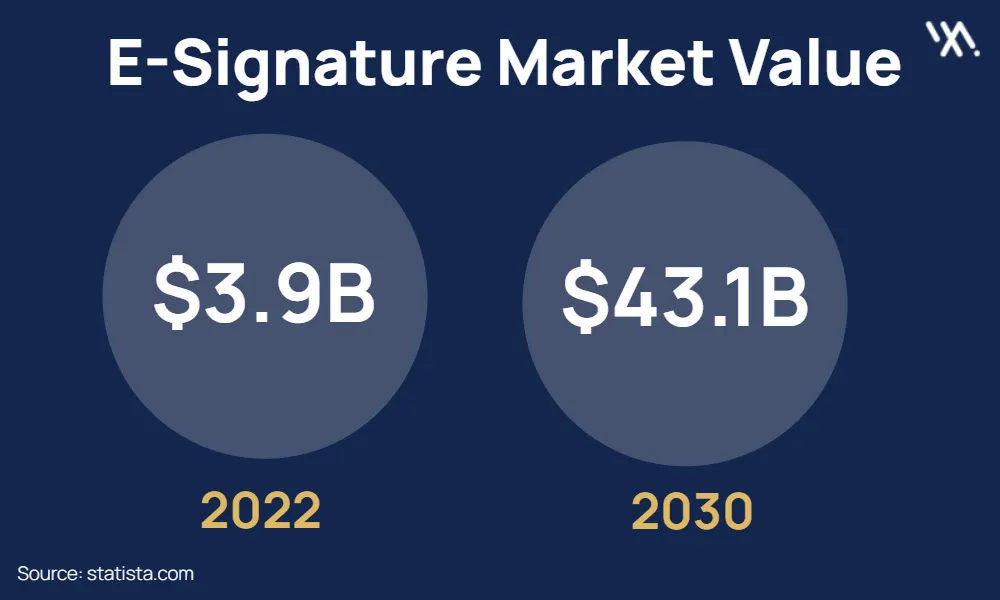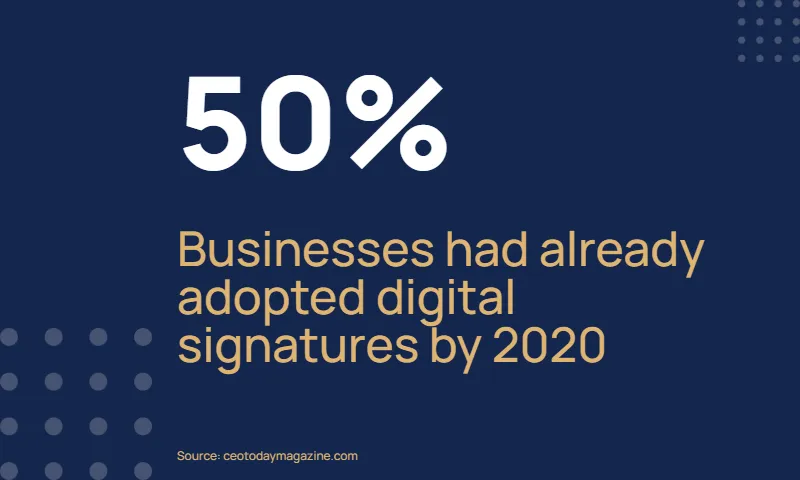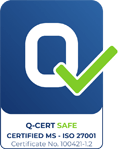Quick Links
In this blog post, we’ll provide you with a step-by-step guide to selecting e-signature software that meets all your needs.
In today’s digital world, wet ink signatures are becoming a thing of the past. E-signature software allows you to sign documents electronically, streamlining workflows and saving time. But with so many options available, choosing the right esignature software can be overwhelming.
Selecting the ideal e-signature software requires careful consideration and a deep understanding of your needs.
Understanding Electronic Signature Platforms
Electronic signatures, also known as legally binding signatures, are legal ways to sign documents electronically. These signatures hold the same legal weight as traditional handwritten signatures when they comply with specific regulations. E-signature platforms provide a secure and efficient way to collect electronic signatures on various documents.
The global electronic signature market is experiencing tremendous growth. According to Statista, the market was valued at around 3.9 billion U.S. dollars in 2022 and is projected to reach a staggering 43.14 billion by 2030. This significant growth reflects the increasing adoption of e-signatures by businesses and individuals around the world.

Benefits of Using Electronic Signature Software in 2024
Using e-signature software offers a multitude of advantages. Let’s explore some of the key benefits of esignature software.
Increased Efficiency
E-signature software eliminates the need for printing, scanning, and mailing physical documents. This saves time and resources for both businesses and individuals.
Improved Convenience
You can sign documents from any location, at any moment, using any device connected to the internet. This provides greater flexibility for signers and eliminates location-based obstacles.
Enhanced Security
Digital signing platforms offer robust security features to protect sensitive documents. These features include audit trails, encryption, and user authentication.
Cost Savings
E-signature software can significantly reduce costs associated with paper, printing, and postage.
Environmental Friendliness
By reducing paper usage, e-signatures contribute to a more sustainable environment.
Factors to Consider When Selecting Electronic Signature Software
When evaluating e-signature solutions, it’s crucial to weigh the factors for choosing e-signature solutions carefully.
This is why this guide to selecting e-signature software is a powerful tool. Let’s delve into these critical considerations to help you make an informed decision.
Ease of Use
The software should be user-friendly for both senders and signers. Look for an intuitive interface that is easy to navigate, even for those not familiar with e-signature technology.
Features Offered
Different e-signature platforms offer a variety of features. Think about what features are important to you, like customizing your brand, sending lots of documents at once, signing on mobile devices, and connecting with other business tools like CRM systems.
Security
Security considerations for eSignature software should be a top priority. Choose a platform that offers robust security features to protect your sensitive documents. This includes features like two-factor authentication, secure document storage, and audit trails.
Compliance
Ensure the e-signature software meets the necessary electronic signature compliance requirements for your industry and the geo-locations of your signers.
The esignature software for international agreements should comply with relevant regulations governing the legality of esignatures such as the GDPR in the European Union (EU) and the U.S. Electronic Signatures in Global and National Commerce Act (E-Sign) of 2000 and UETA (1999).
Scalability
Consider your future needs. Will your signing volume increase? Choosing the best eSignature software for small businesses today might not be the ideal solution if you anticipate significant growth. Look for software that can scale with your business to accommodate future demands.
Pricing
E-signature software pricing varies depending on features offered, user volume, and storage needs. Compare pricing plans from different vendors to find one that fits your budget.
Online Document Signing
Ensure that the e-signature software you choose allows for online document signing. This feature enables signers to electronically sign documents from any location with an internet connection.
Step-by-Step Guide to Choosing the Right E-Signature Solution
In today’s digital world, e-signature software offers a convenient and secure way to streamline document signing processes. However, with numerous options available, selecting the right solution can seem overwhelming.
Here’s a step-by-step guide to help you choose the most suitable e-signature software for your needs:
Step 1. Identify Your Needs and Requirements
Start by defining your needs and requirements for e-signature software. Consider questions like:
- What types of documents will you be using e-signatures for? (Contracts, NDAs, proposals, etc.)
- How many documents will you typically need to sign and send per month?
- How many users will need access to the e-signature platform? (Senders and signers)
- Do you need features like bulk sending, mobile signing, or integrations with other applications?
- What is your budget for e-signature software?
By knowing exactly what you need, you can narrow down your search and discover the electronic signature solution that provides the features and functions that matter most to you.
Step 2. Research E-Signature Software Options
Once you have a clearer picture of your requirements, start researching different e-signature software vendors. Here are some resources to help you:
- Industry review websites: Look for reviews and comparisons of e-signature software on reputable websites.
- Software vendor websites: Visit the websites of leading e-signature software providers to learn about their features, pricing plans, and customer testimonials.
- Industry publications: Articles and research reports from industry publications can provide insights into the latest trends and best practices in e-signatures.
Step 3. Evaluate Features and Security
As you research different options, carefully evaluate the features offered by each e-signature software solution. Pay close attention to:
- Ease of Use: Is the software user-friendly for both senders and signers, even those not familiar with e-signature technology?
- Security Features: Does the software offer robust security measures like data encryption, access controls, and audit trails? (Refer to the “Security Considerations for eSignature Software” section below for details)
- Compliance: Does the software comply with relevant electronic signature regulations for your industry and geographical locations of your signers?
- Integrations: Does the software integrate with your existing CRM, document management system, or other business applications?
Step 4. Consider Pricing and Scalability
E-signature software pricing varies depending on the features offered, user volume, and storage needs.
Compare pricing plans from different vendors to find a solution that fits your budget.
Additionally, consider the scalability of the software. Will your signing volume increase in the future?
Choose a platform with a price that doesn’t change, even if your company grows bigger.
Step 5. Free Trials and Demos
Many e-signature software vendors offer free trials or demos. Take advantage of these opportunities to test-drive the software and see if it meets your needs.
This is a great way to try out the user interface and features yourself before making a final decision.
Step 6. Make an Informed Decision
After completing your research, comparing features, and considering pricing, you’ll be in a strong position to make an informed decision about the best e-signature software for your needs.
Don’t hesitate to contact e-signature software vendors with any questions you may have during the selection process.
By following these steps, you can choose an e-signature software solution that streamlines your document signing workflows, enhances security, and meets the unique requirements of your business.
Electronic Signature Software Features
While many e-signature software options exist, they don’t all offer the same features. Here are the key top features of electronic signature software to consider when making your selection:
Drag-and-drop signature placement
This allows users to easily place their signatures exactly where they need them on the document.
Pre-filling capabilities
Pre-filling allows you to automatically populate fields in the document with signer information, saving time and reducing errors.
Branding Customization
For businesses, being able to customize the e-signature experience with your company logo and branding is really important.
An esignature software with branding options allows you to maintain a professional look and feel throughout the signing process. This can be particularly important when dealing with clients or external parties.
Mobile signing
This feature allows signers to sign documents from their smartphones or tablets, adding greater flexibility.
Audit trails
Audit trails provide a detailed record of all actions taken on a document, ensuring transparency and accountability.
Secure document storage
E-signature platforms offer secure storage for signed documents, allowing for easy access and retrieval.
Integrations
For businesses that rely on Customer Relationship Management (CRM) software, integrating eSignature software with CRM systems can significantly enhance workflow efficiency.
An electronic signature solution that seamlessly integrates with your CRM lets you manage your sales pipeline, blast out contracts for e-signatures, and track who signed what, all from one place. No more app juggling – this integration keeps things smooth and efficient.
Comparison of Electronic Signature Software for Businesses

A recent study by CEO Today Magazine indicates that over 50% of businesses had already adopted digital signatures by 2020. This widespread adoption highlights the numerous benefits e-signatures offer businesses, such as improved efficiency, enhanced security, and cost savings.
The market offers a wide range of e-signature software solutions designed to meet the needs of businesses of all sizes. Consider researching several popular options to find the best fit for your specific requirements.
When performing an e-signature software comparison, it’s crucial to evaluate several key factors. These include:
- The features offered by each software
- Pricing plans available
- Ease of use
- Secure document sharing
- Scalability of the software.
Security Considerations for eSignature Software
Security should be a top priority when choosing e-signature software. These platforms handle sensitive documents and electronic signatures, so robust security measures are essential.
Here are some key security considerations:
Data Encryption
The e-signature software should use strong encryption algorithms to protect documents. This ensures that unauthorized individuals cannot access or tamper with sensitive information.
Access Controls
The software should offer granular access controls to restrict who can send, sign, and view documents. This helps to prevent unauthorized access and ensures that only authorized users can modify documents.
Multi-Factor Authentication
Multi-factor authentication adds an extra layer of security by requiring users to enter a second verification code in addition to their password when logging in. This helps to prevent unauthorized access even if someone obtains a user’s password.
Audit Trails
A comprehensive audit trail provides a detailed record of all actions taken within the e-signature software. This includes who signed a document, when they signed it, and their IP address. Audit trails are crucial for maintaining compliance and demonstrating the validity of electronic signatures.
Document Tampering Detection
The software must be able to detect any attempts to tamper with a document after it has been signed. This ensures the integrity of the document and helps to prevent fraud.
Disaster Recovery
The e-signature software provider needs to have a strong plan for what to do if something bad like a natural disaster happens. This plan helps keep your data safe.
By thinking about these security measures carefully, you can pick e-signature software that keeps your electronic documents and signatures safe.
Conclusion
Choosing the right e-signature software can significantly improve your document workflows and boost overall efficiency. Think about the factors mentioned in this guide and carefully evaluate different solutions. This way you can select a platform that meets your specific needs and budget.
Remember, the ideal e-signature software should be user-friendly, secure, compliant, and scalable to accommodate your future growth.
Exciting new e-signature platforms are emerging all the time, offering fresh features and functionalities.
By checking out these new options along with the ones that have been around for a while, you will be ready to find the perfect solution to make your signing processes easier and embrace a fully digital way of working.
With electronic signature technology advancements at the forefront, the future of e-signatures is bright, offering even greater security, convenience, and accessibility for everyone.
Curious to learn more? WayMore’s experts are ready to chat!




